In the spring, when the UK was about to enter lockdown, my partner and I considered whether it might be safer to return for a period to her home country of Aotearoa New Zealand (‘Aotearoa’ is the Māori name for the country; this review follows the increasingly accepted convention of using Māori alongside English place names). Neither of us has much family in the UK, after all, but we still rejected the idea in the end. It was the beginning of winter in the southern hemisphere, and the virus was supposed to prefer the cold. Her family reminded us that Aotearoa was geographically isolated and might become cut off from medical supplies, a potential vaccine, the international toilet paper supply chain. It wasn’t clear at the time that the country would fare any better than England over the coming months.
Needless to say, perhaps, events did not unfold as we had anticipated. And so in mid June, we arrived in Rotorua and began two weeks of quarantine. From our hotel window, we could see one of Aotearoa’s largest lakes, an enormous inland sea, framed on the horizon by hunched slopes that look a little like the Sussex Downs. In the morning, we could watch the sun come up over the hills. During the day seaplanes would land just out of view, to the left, on the lake. For our two-year-old, Brighton – home – was likely just over those hills.
That Aotearoa New Zealand offers a rich vantage point from which to consider the tensions and affordances of displacement is the central claim of the generous, sprawling exhibition ‘Te Wheke: Pathways across Oceania’. Running at Te Puna O Waiwhetū Christchurch Art Gallery from May 2020 to March 2022, the exhibition represents a substantial reconsideration of the gallery’s permanent collection, which has been reorganised and rehung and includes newly commissioned work.
As the curators point out in an interpretive video accompanying a 19th-century cabinet made by a Pākehā (white) settler from Lancashire, evidence of the British colonial dispossession of the indigenous Māori population is everywhere in Ōtautahi Christchurch. Across the street from the gallery, for example, the Arts Centre occupies what was the city’s university until the 1970s: a set of 19th-century Gothic Revival buildings meant to mimic the quads and lawns of an Oxford college. Even the grass is an invasive species.
However, instead of centring European art, as many earlier models of art history are wont to do, the narrative of influence in ‘Te Wheke’ runs ‘in a different direction – from the Pacific outwards’, to use a phrase from the catalogue accompanying the exhibition. Across periods, the works in this exhibition are as likely to display their indebtedness to the aesthetics and traditions of Polynesia as to Europe. This reorientation offers an opportunity to emphasise the significance of Māori and Pasifika art both to the gallery’s collections and to the history of art in Aotearoa New Zealand, as well as to rethink the nostalgia and appropriative practices of white New Zealander artists.
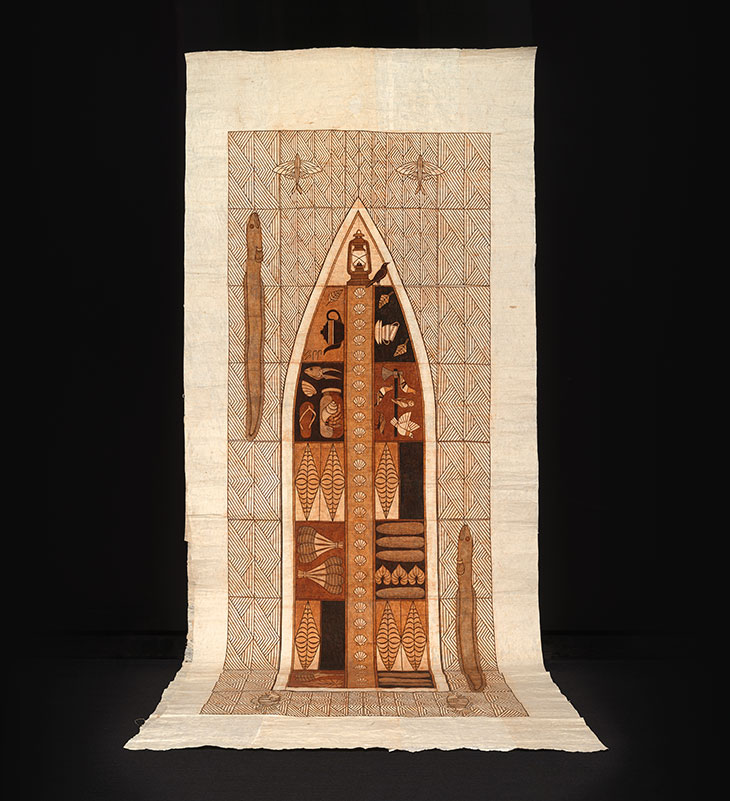
We are the small axe (2015), Robin White and Ruha Fifita. Christchurch Art Gallery Te Puna o Waiwhetū
Patterns of influence are explored heterogeneously and from multiple angles. Robin White and Ruha Fifita’s We Are the Small Axe (2015) incorporates images of a tea set, a flip-flop sandal (known in Aotearoa as a ‘jandal’), and a kerosene lamp into a design printed on a tapa, a traditional Polynesian bark cloth. The 19th-century pātaka (food storage) cabinet, made by the Lancashire-born John Henry Menzies, uses both indigenous kauri wood and American walnut carved with a beautiful but culturally nonsensical array of Māori motifs. It would have been easy to position Menzies’ cabinet as the 19th-century joinery equivalent of Robbie Williams’ Māori-inspired sleeve tattoo. Instead, the exhibition texts, and a film made about the work, robustly critique Menzies’s appropriations while examining his attempts to situate and remake himself in response to his geographic context with seriousness and magnanimity – a sign of the complex curatorial practice at work throughout this exhibition.
The artists represented here at times choose quite forthright methods for investigating their themes. Take Fiona Pardington’s unsettling Portrait of a Life-cast, Possibly of ‘Taha-tahala’ [possibly Takatahara], Aotearoa New Zealand (2010). The life-cast that is Pardington’s subject is believed to depict her ancestor Takatahara, from Te Pātaka o Rākaihautū Banks Peninsula near Ōtautahi. It was made in the early 19th century according to the techniques of the French naturalist, phrenologist, and naval officer Jules Dumont d’Urville. But in Pardington’s photograph, the texture of Takatahara’s skin, even the eyelashes, is so minutely registered that he comes momentarily back to life. In this way, Pardington’s work wrenches the likeness away from its original, abstractive purpose as a phrenological bust, making it possible to see here an individual rather than a specimen. The photograph’s positioning in the exhibition alongside a group of other portraits, including Kevin Capon’s intense close-ups of faces and skin, enhances this effect.
Or consider Yuki Kihara’s photographs in the exhibition: self-portraits that Kihara, who is of Sāmoan and Japanese descent and will be New Zealand’s representative at the Venice Biennale next year, made in the aftermath of Cyclone Evan, which hit Sāmoa in 2012. Like Pardington’s work, Kihara’s photographs are in explicit dialogue with European and colonial art history. In After Tsunami Galu Afi, Lalomanu (2013), the artist – in the guise of her biblically inspired alter ego, Salome – is shown from behind. She is gazing out to sea, her head and shoulders positioned just above the horizon line; the composition and costuming evoking 19th-century European art (compare, for instance, either of John William Waterhouse’s paintings of Miranda in The Tempest). Thus while this photograph is a response to a particular disaster, it invites the viewer to extend the scale of the crisis it witnesses in space as well as in time.
This exhibition’s brilliance lies in its revelation of a model of influence, or perhaps relation, that highlights reciprocity rather than priority. This happens both within individual works and between them, as is established immediately in the first room of the exhibition, which is devoted to Vā, a ‘space between’. Here, a reticular – even archipelagic – model of relations is explored. This links work after work in the exhibition, from Grace Ngaputa Pera’s gorgeous Matirita [chrysanthemum] (c. 1958) – an example of the colourful quilts known as tivaevae, an art form that has flourished in the Cook Islands since its (probable) introduction by 19th-century English missionaries – to Not of This Time (Dreamland), a monumental canvas from 2008 by John Pule. This white-and-blue example of Pule’s ‘cloud paintings’, in the artist’s words, ‘incorporate[s] Niue creation stories, islands, the ocean (especially crossing the Pacific going to Niue or from elsewhere to Aotearoa)’.
![Matirita [chrysanthemum] (c. 1958), Grace Ngaputa Pera. Collection of Pera family, Christchurch](http://www.apollo-magazine.com/wp-content/uploads/2020/08/Grace-Ngaputa-Matirita.jpg?resize=730%2C668)
Matirita [chrysanthemum] (c. 1958), Grace Ngaputa Pera. Collection of Pera family, Christchurch
To someone like me, a white Canadian, who comes to the art of Aotearoa New Zealand from the outside, it is thrilling to see mid-century European artistic minimalism predated by works such as an early 20th-century carved post from the Cook Islands covered with minute reversing Ks – like a Peter Roehr hectograph in three dimensions. Pieces like this also suggest an alternative genealogy for works by artists displayed later in the exhibition, such as Russell Clark’s View from the Pier (1964). In the context of this exhibition, it becomes clear that Clark’s representation of landscape owes as much to the forms of Māori whakairo (carving) or kōwhaiwhai (rafter patterns) as to European cubism.
One of the most astonishing objects in the exhibition is a mattang (stick chart): a woven mat adorned with cowrie shells, originally made by Polynesian navigators to track wind patterns, the flight paths of birds, currents, stars, and the position of the moon. Placed here, it represents another example of thinking in terms of a complex network of relations. But while the mattang was meant to facilitate connection, it also represents a model of private knowledge: so complex and personal is the mattang, we are told, that ‘some stick charts were only “readable” by their makers’.
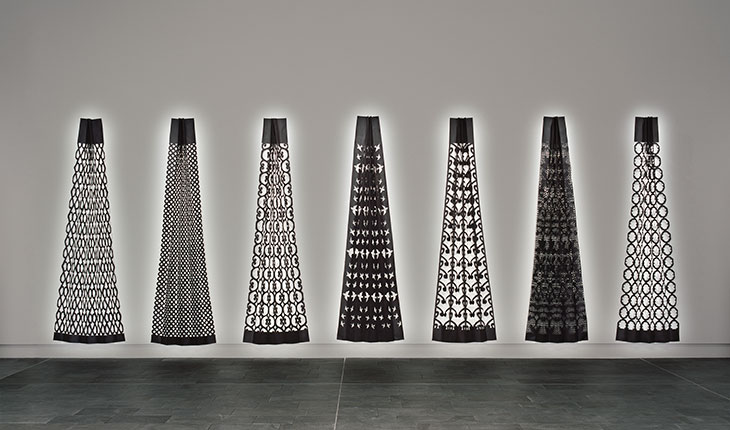
Sista7 (2003), Lonnie Hutchinson. Christchurch Art Gallery Te Puna o Waiwhetū. Reproduced with permission
Near the mattang is displayed Lonnie Hutchinson’s Sista7 (2003), a series of immense folded black paper cut-outs representing a volcanic mountain range that skirts Ōhinetahi Governors Bay south-east of Ōtautahi, which is part of the rohe (territory) of Ngāti Wheke. These seven peaks are known in English as the Seven Sisters, perhaps an allusion to the Seven Sisters ranged along the coast on the Sussex Downs, west of Beachy Head. Hutchinson’s hand-cut pieces of paper, with their intricate abstract designs, echoed for me the carved wooden surfaces I had encountered earlier in the exhibition. But they also mapped out a landscape I recognised: I had swum near there a few summers ago. And when I was in front of Hutchinson’s work I could squint a little and imagine I was home.
‘Te Wheke: Pathways Across Oceania’ is at Christchurch Art Gallery Te Puna o Waiwhetū until March 2022.
Unlimited access from just $16 every 3 months
Subscribe to get unlimited and exclusive access to the top art stories, interviews and exhibition reviews.

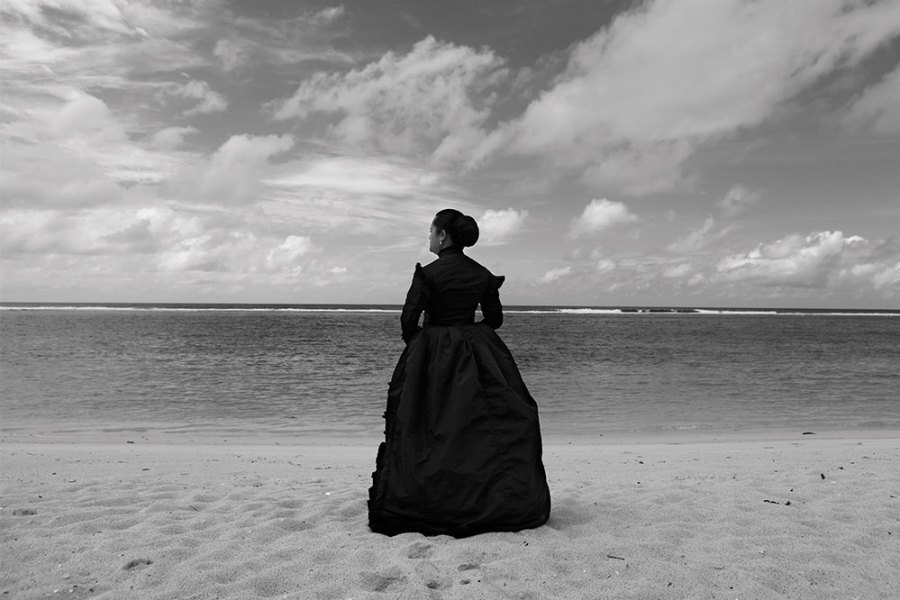
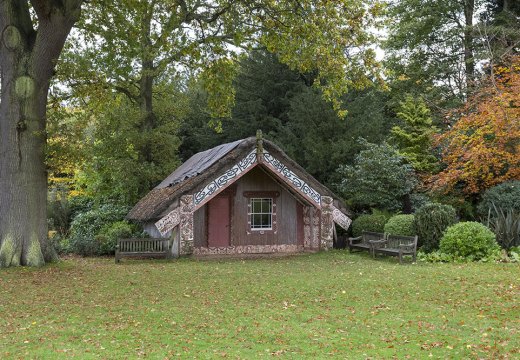
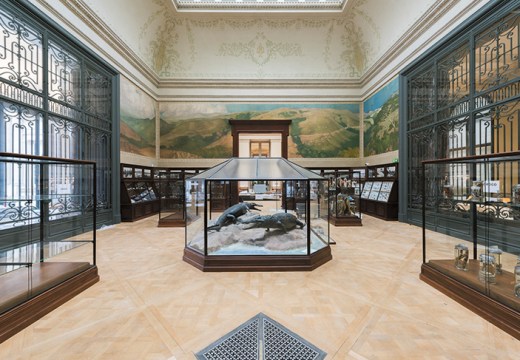
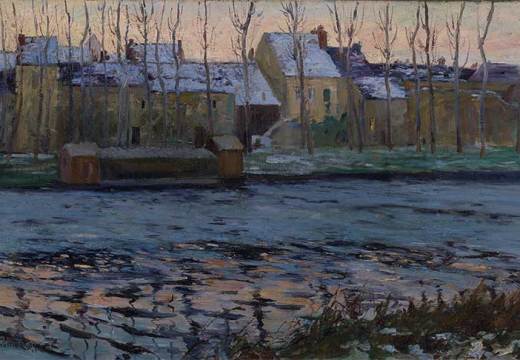









![Masterpiece [Re]discovery 2022. Photo: Ben Fisher Photography, courtesy of Masterpiece London](http://www.apollo-magazine.com/wp-content/uploads/2022/07/MPL2022_4263.jpg)
It’s time for the government of London to return to its rightful home